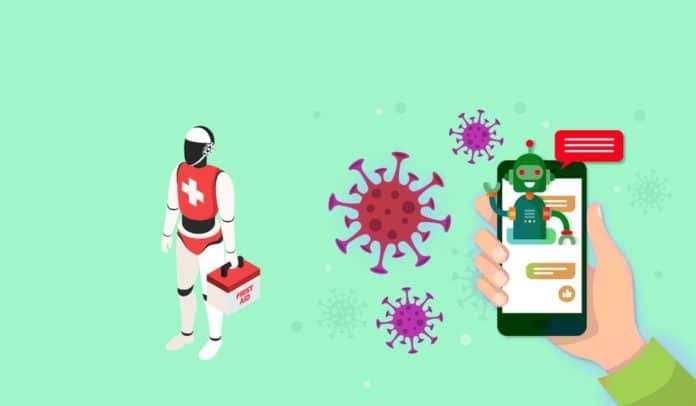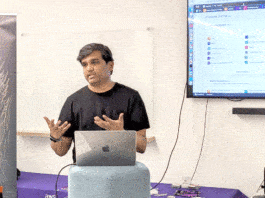Public health emergency management is not just about physicians or patients.
It is also about technology professionals developing solutions to mitigate adverse impacts. From artificial intelligence (AI) to the Internet of Things (IoT), a spectrum of technological solutions can be leveraged to deliver better healthcare services. In this article, we will explore these possibilities.
Can the world be ready for the next pandemic? With AI, yes!
With the outbreak of the COVID-19 pandemic, medical practitioners and public policy thinkers have used new technologies such as artificial intelligence (AI), machine learning (ML), the Internet of Things (IoT), and automation for technology-driven disaster response systems. All of these can be put to great use to fight the current and any future pandemic.
Healthcare AI-powered bots
AI-powered chatbots can help medical practitioners in disease testing, vital stats monitoring, and primary care. A few years back, chatbots used to be query-to-retrieve computer programs that rendered relevant text documents based on keyword matches. Today, with AI, chatbots have evolved to become smart, understanding both the keywords and the search intent behind those keywords. Messenger bots can be deployed to perform disease symptom checks, identify the possible medical conditions, and perform preliminary diagnosis. AI and ML healthcare chatbots, emerging to be called symptom checkers, can reduce unnecessary doctor visits.
Developers have a range of NLP libraries to choose from — from Microsoft’s Bot framework to Rasa and Wit.ai. Wit.ai is a very popular open source framework. Recently procured by Facebook, it seems to be dominating the market with its ‘easy to deploy’ entities and intent. Wit.ai has SDKs compatible with iOS, Node.js, Python and Ruby. This AI framework, which comes with over 80+ world languages, can easily be integrated into mobile apps, websites, Facebook messenger, Slack, smart wearable devices, and home automation. When these frameworks are developed into symptom checkers, they can efficiently combine rule-based algorithms with natural language processing (NLP) libraries to render the most relevant medical prognosis.
Neural networks for disease progression modelling
Neural networks, a form of deep learning computational model, can be trained to perform tasks like classification, prediction, visualisation, and decision-making. Artificial neural networks, also called artificial neurons and organised in different interconnected layers called input, hidden, and output layers, work on feed-forward and/or back-propagation algorithms to mass classify data sets and generate desired outputs. While there are different types of artificial neural networks, deep convolutional neural networks (DCNNs) and recurrent neural networks (RNNs) have the utmost relevance in the healthcare domain.
DCNNs use many hidden layers to perform convolutions and sub-sampling of the raw input data. The hidden layers process repetitive convolutions using unsupervised classification methodologies until features to the most granular pixel levels are extracted, and the estimated class is computed for the output layer. DCNN also uses ML methods like back-propagation techniques and the rescaling of gradients to minimise classification errors on the output data. In medical imaging and chest x-rays, the DCNN feature extraction process can better detect disease pathology and monitor progression. The data augmentation of DCNN is 96.6 per cent accurate.
RNNs in medical diagnoses are used for analysing temporal data sets.
Neurons like nodes arranged in successive layers work on one-way feed-forward propagation mechanisms. RNNs thrive on supervised classification. Sample training data sets, along with the raw input data, are required to perform feature extraction and image classifications. Although the accuracy rate of prognosis in RNNs is a little lesser than that in DCNNs, it is still preferred by medical data analysts for its longitudinal analysis capabilities. RNNs can read medical histories, analyse temporal aspects of the illness, infer the current state of the pathology, and predict future disease progressions. Multi-scale temporal pooling of disease data helps the network monitor the disease progression more holistically.
AI-based neural networks let professionals optimise their work and time better. Neural networks help the medical fraternity deliver better healthcare services during time-critical medical emergencies, pandemics, or epidemic scenarios. First, both DCNNs and RNNs take less than a few seconds to diagnose medical conditions and monitor disease progression. The accelerated speed of diagnosis makes way for early treatment intervention and better cure rates. Second, it helps radiology experts optimise their time better and effectively work alongside deep learning networks. They can automate repetitive and time-consuming imaging reading tasks to AI-based neural networks and focus more on developing their medical domain expertise.
IoT integrated primary care
Primary healthcare means monitoring patients’ responses to medical treatments during doctor visits or hospital stays. However, with IoT, the frequency of all such in-person visits can be significantly reduced. Even better, all the health stats can be accurately monitored remotely. Diagnostic wearable sensors like fitness bands, pulse oximeters, fluid level meters, or sphygmomanometers; nutrition monitoring, and sleep detectors can be used to collect critical patient data. All analogue data collected from sensors can be aggregated and converted into digital formats by the analogue-to-digital converters (ADCs) integrated into the IoT devices. The aggregated digital data is further pre-processed and published to data servers or the service cloud using HTTP or MQTT protocols. All repository data from the cloud can be used to create analytics instances using RESTful API services. Developers can perform real-time health telemetry streaming, detect pathological events, gain insights into historical patient records, and give information about diseases affecting multiple organs. The application of ML algorithms on health data sets can reveal hidden pathological correlations, raise alarms in case of abnormalities, and provide predictive health analytics. Post-visit medication adherence, treatment progress, and disease cure can all be tele-monitored using IoT devices and wearable biosensors.
Centralised disease tracking applications
As of today, health information systems are largely limited to hospital administration. To some extent, insurance companies do keep track of the disease history of their policyholders. However, a large-scale centralised application to maintain citizens’ healthcare assets can facilitate better public healthcare services at a macro-scale. IoT and RFID can be integrated to create and maintain all births, vaccinations, diseases, and death records.
Centralised healthcare applications can help doctors access all disease records of their patients on a single user interface without them having to review papers or verbal declarations manually. Electronic Health Records (EHRs) can benefit doctors by providing a better prognosis and treatment via tele-health. The only thing that is challenging the development of such applications today is privacy and cybersecurity. Automation is indeed a double-edged sword. While there are many benefits of automating health records, the risk of hacking, data breach, and ransomware does exist. Digitisation of medical records requires high-level application security, compliance audits, and security automation. It also requires stringent laws and regulations for personal data protection — something along the lines of the European General Data Protection Regulation (GDPR). If technology professionals and those in governance can address this risk, then a centralised server can be the ideal solution to control all disease outbreaks, and not just this pandemic.
In the case of COVID-19, fatalities were more evident for those with some disease history like diabetes, blood pressure, obesity, myocardial infarctions, or renal problems. An AI-IoT integrated application could quickly identify these highly vulnerable groups so that customised critical care could be offered to these patients. COVID fatalities could have been greatly minimised had there been an AI-IoT based approach to primary healthcare. Many in the technology industry have resisted AI this far in the fear of job loss. However, AI will not complement jobs; it will supplement them. With the help of AI, professionals in information technology, medical, or those in governance can focus on their core expertise while making automation and AI do all the repetitive and analytical work for them.
Across the globe, we claim to be a technologically advanced and a digitally competent generation. However, are we able to better control disasters or disease outbreaks? The global COVID-19 statistics prove that we can’t, yet.
This is a wake-up call, and the need of the hour is for us to take advantage of all the technology that is available to us. Artificial intelligence, machine learning, the Internet of Things (IoT), and automation can help medical practitioners provide better patient care. They can help public policymakers build socially resilient communities. Technology and digital transformation can help us be better prepared for the next pandemic and thereafter. So, in the best interest of humanity, let us adopt AI power for public health.




